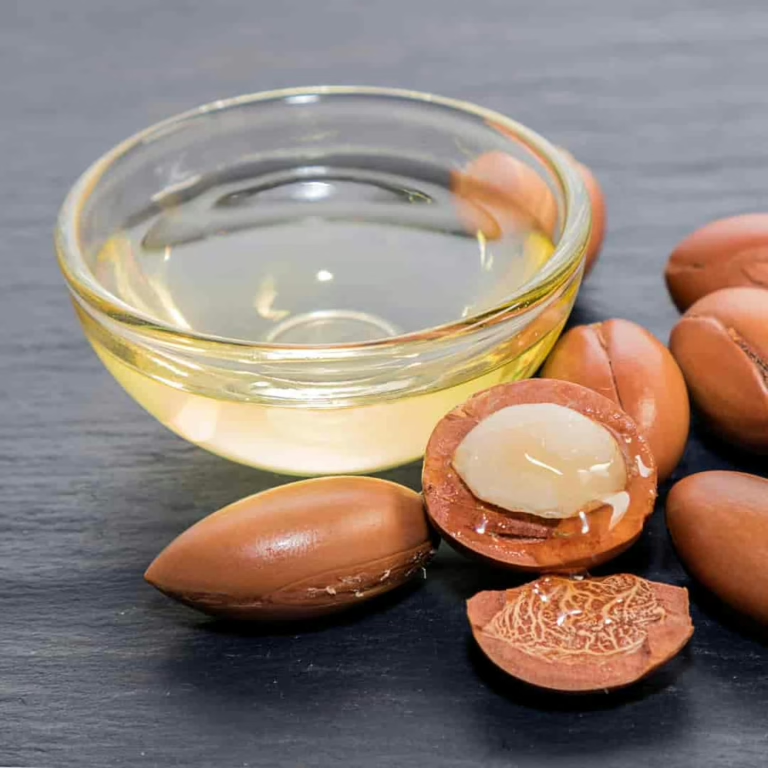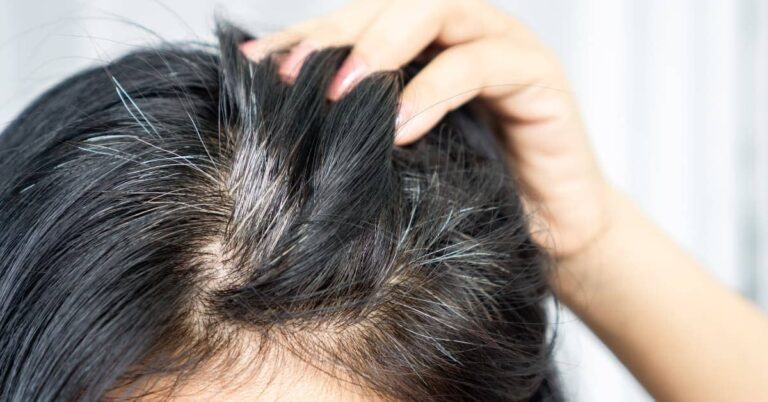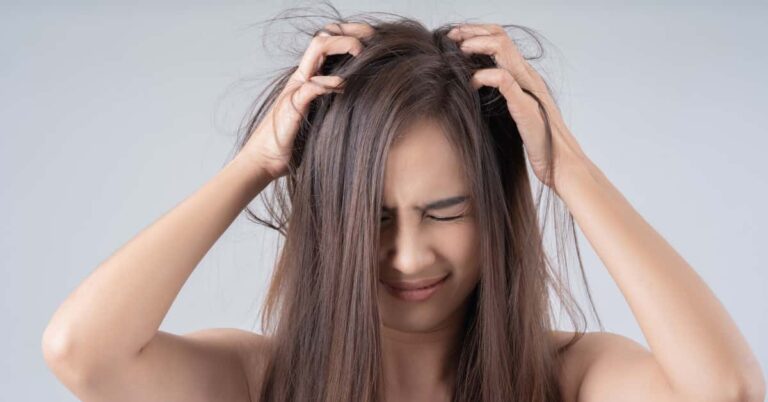7 Beliefs That Dandruff Is Contagious—Here’s Reality
Have you ever hesitated to share your hairbrush or felt embarrassed about your flaky scalp because you believed dandruff was contagious? You’re not alone. Many people harbour misconceptions about dandruff, leading them to adopt ineffective—or even counterproductive—hair care routines. In this article, we’re going to debunk the most common myths surrounding dandruff using clear, science-backed explanations and actionable advice. By the end, you’ll have a better understanding of what really causes dandruff and how you can manage your scalp health with confidence. Whether you’re struggling with persistent flakes or just curious about the truth behind the buzz, this guide is designed with you in mind, using simple language and practical tips that you can implement right away.
Myth 1: Dandruff Is Contagious
It’s a common fear: the idea that dandruff can be “caught” from someone else. But here’s the truth—you can’t catch dandruff from another person. Dandruff is not an infectious condition; rather, it’s a result of how your scalp reacts to certain factors. The primary culprit is a naturally occurring fungus called *Malassezia*, which lives on everyone’s scalp. In some people, an overgrowth of this fungus triggers an inflammatory response, leading to the flaking and irritation we recognize as dandruff.
This misconception likely stems from old beliefs about hygiene and the visible spread of flakes. However, dandruff is more about your body’s internal balance than about catching something from someone else. Maintaining a good scalp care routine is important, but there’s no need to worry about avoiding contact with others or sharing combs as a measure to prevent contagion
What can you do?
Stick to a routine that focuses on balancing your scalp’s natural oils rather than obsessing over cleanliness alone.
Use a gentle shampoo designed for dandruff control; ingredients like zinc parishioner and ketogenic can help regulate the fungal growth without over-drying your scalp.
Remember, understanding that dandruff isn’t contagious should relieve a lot of unnecessary stress. Instead of worrying about transmission, focus on managing your scalp’s health with proven, science-backed methods.
Myth 2: Washing Hair Daily Cures Dandruff
Many believe that the secret to a flake-free scalp is washing your hair every day. While it might seem logical to remove oils and dead skin cells through daily washing, overdoing it can actually worsen dandruff. Daily shampooing, especially with harsh formulas, can strip your scalp of its natural oils. These oils are essential for protecting your skin and maintaining a healthy barrier. When your scalp loses too much oil, it compensates by producing even more, leading to a cycle that can result in increased flaking.
It’s important to strike a balance. Instead of washing your hair daily, consider a routine that cleanses without over-drying. For many people with dandruff, washing two to three times per week with a mild, anti-dandruff shampoo is sufficient. This schedule allows your scalp to maintain its natural moisture while still managing excess oil and fungal growth.
Here’s a tip for you:
Look for shampoos that offer both cleansing and moisturising benefits. Ingredients like tea tree oil and aloe Vera can soothe the scalp while combating dandruff.
If you have an oily scalp, try alternating a gentle, sulphate-free shampoo with your anti-dandruff shampoo. This method helps maintain a healthy balance without triggering more oil production.
By adjusting your hair-washing routine and choosing the right products, you can avoid the pitfall of over-cleansing and give your scalp the care it truly needs.
Myth 3: Oiling Hair Can Get Rid of Dandruff
In many households, especially in India, oiling your hair is a cherished tradition believed to promote hair health. However, when it comes to dandruff, this practice can sometimes backfire. While a light oil application can provide nourishment, heavy or frequent oiling may actually worsen dandruff for some people. Here’s why: excessive oil can create an environment that favors the growth of *Malassezia*, the fungus linked to dandruff. The extra oil can trap dead skin cells and cause them to clump together, leading to more pronounced flakes.
The idea that oiling will “lubricate” your scalp and wash away the flakes is a myth. In reality, if your scalp is already producing too much oil, adding more can further disrupt the natural balance. This doesn’t mean you have to abandon oiling entirely. The key is moderation and using the right type of oil. For example, lightweight oils like tea tree oil, seem oil, or even a diluted blend of coconut oil can help because they have antimicrobial properties and won’t weigh down your scalp as much.
Here’s how you can make oiling work for you:
Use sparingly: – Apply oil only once or twice a week, focusing on the scalp rather than the entire length of your hair.
- Choose the right oil: Consider oils with anti fungal benefits. Tea tree oil, for example, can be diluted in a carrier oil to reduce fungal activity without clogging your pores.
- Follow up with proper washing: After oiling, ensure you wash your hair thoroughly with an anti-dandruff shampoo to remove any residual oil buildup that could contribute to further flaking.
By adjusting your oiling routine and being mindful of the types of oils you use, you can harness the benefits of natural oils without falling into the trap of worsening your dandruff. Your scalp deserves balance, and with careful use, you can enjoy the nourishing effects of oil without compromising on dandruff control.
Myth 4: Dandruff Means You Have a Dry Scalp
It might seem intuitive to associate flakes with a dry scalp, but dandruff is not simply a sign of dryness. In fact, dandruff is often linked to an oily scalp condition known as seborrheic dermatitis. This condition occurs when the scalp produces too much sebum (oil), creating an environment where *Malaysia thrives. The result is an inflammatory reaction that causes the scalp to shed excess skin cells in the form of flakes.
Many people mistakenly think that the solution is to hydrate their scalp with heavy moisturises or oils, but this approach can be counterproductive if your scalp is already oily. Instead, the focus should be on restoring balance to your scalp’s natural oil production. This means using shampoos and treatments that are specifically formulated to manage oiliness while still providing gentle cleansing.
Actionable advice for you:
Opt for a balanced shampoo: Look for products that contain ingredients like cyclical acid or zinc parishioner, which help control oil production while reducing inflammation.
Avoid heavy conditioners on the scalp: Use conditioners sparingly and focus on the hair lengths rather than the scalp to prevent additional oil buildup.
Regularly assess your scalp’s needs: If you notice persistent oiliness and flaking despite following a routine, it might be time to switch products or consult a specialist for a personalized treatment plan.
Understanding that dandruff is often a symptom of an oily scalp rather than a dry one can help you choose the right products and routines for effective management. Embrace a balanced approach that respects your scalp’s natural state and promotes long-term health
Myth 5: Anti-Dandruff Shampoos Work Instantly
We all love quick fixes, especially when it comes to beauty and personal care. However, expecting instant results from anti-dandruff shampoos is unrealistic. The active ingredients in these shampoos—such as zinc parishioner, ketogenic, or selenium sulphide—need time to work. Consistent use over a period of two to four weeks is usually required before you see noticeable improvements in flaking and scalp health.
The notion of an overnight miracle is a myth that can lead to frustration and inconsistent use of the product. When you first start using an anti-dandruff shampoo, you might even notice an initial increase in flakes as the product loosens and removes built-up skin cells. This is a normal part of the process, signalising that the shampoo is working to clear away the old layers so that new, healthier skin can take their place.
Here’s how to manage your expectations:
Be patient:- Commit to a routine for at least a month before deciding whether the product is effective for you.
Follow instructions:- Use the shampoo exactly as directed—this might mean leaving it on for a few minutes before rinsing.
Monitor progress:- Keep a simple journal of your scalp’s condition to track improvements over time. This can help you determine whether the shampoo is truly making a difference.
Remember, consistency is key. Anti-dandruff shampoos are part of a long-term strategy to manage your scalp health, not a one-time solution. With regular use and realistic expectations, you’ll gradually notice a reduction in flakes and an improvement in overall scalp comfort.
Myth 6: Sunlight Cures Dandruff
Sunlight is often hailed as a natural remedy for many skin conditions, but when it comes to dandruff, relying on the sun can be misleading. While moderate sun exposure does have benefits—such as boosting vitamin D levels—excessive sunlight can actually harm your scalp. The ultraviolet (UV) rays in sunlight can dry out your skin, leading to increased irritation and, in some cases, more pronounced flaking.
For those who believe that basking in the sun will clear away dandruff, it’s important to understand that the benefits of vitamin D do not outweigh the risks of sun damage. Overexposure to UV rays can disrupt the natural moisture balance of your scalp, exacerbate inflammation, and potentially lead to long-term damage.
What you should do instead:
Limit sun exposure ;-Enjoy the sunshine, but be mindful of the time you spend outdoors, especially during peak hours.
Protect your scalp:- Consider using SPF scalp sprays or wearing a hat if you’re going to be under the sun for extended periods.
Moisturise appropriately:- If you spend time in the sun, ensure that you follow up with a gentle moisturiser or scalp treatment to replenish lost moisture.
By balancing sun exposure with proper protection and care, you can benefit from the natural advantages of sunlight without worsening your dandruff.
Myth 7: Only People With Poor Hygiene Get Dandruff
It’s a misconception that dandruff is a result of poor hygiene. In reality, even the most meticulous hair care routines can’t always prevent dandruff. The condition is influenced by a variety of factors, including genetics, stress, hormonal fluctuations, and an imbalance in the natural flora of your scalp. This means that even if you wash your hair regularly and take great care of your appearance, you might still experience dandruff.
This myth often leads to unnecessary guilt or embarrassment. The truth is that dandruff is a common condition that affects millions of people worldwide, regardless of how often they wash their hair. It’s not a reflection of your personal cleanliness but rather an indication that your scalp may need a different kind of care.
Here’s what you can do:
Focus on scalp health:- Rather than obsessing over how frequently you wash your hair, direct your attention to maintaining a balanced scalp environment.
Adopt a holistic approach:- Manage stress through relaxation techniques such as yoga or meditation, as stress can significantly impact scalp health.
Tailor your routine:- Everyone’s scalp is unique. Experiment with different products and routines until you find what works best for your specific needs.
By shifting the focus from hygiene to overall scalp wellness, you can better manage dandruff without the stigma of poor personal care. Remember, a balanced approach that addresses both external care and internal factors will serve you best in the long run
How to Effectively Get Rid of Dandruff
Now that we’ve debunked the common myths, let’s focus on what you can do to effectively manage and reduce dandruff. A proactive, balanced approach can make a significant difference in your scalp health. Here’s a step-by-step guide to help you achieve a flake-free scalp:
1. Choose the Right Shampoo :
Select a mild, anti-dandruff shampoo that contains proven active ingredients like zinc pyrithione, ketoconazole, or salicylic acid. These ingredients work to control the fungal growth and reduce inflammation. Use the shampoo as directed, usually 2-3 times per week, to allow your scalp to adjust.
2. Incorporate a Gentle Scalp Massage
When washing your hair, take a few extra minutes to massage your scalp gently. This helps improve blood circulation and ensures that the active ingredients penetrate deeply, enhancing their effectiveness. A soothing scalp massage can also relieve tension and promote relaxation.
3. Consider DIY Scalp Treatments:
You might want to try natural remedies such as an apple cider vinegar rinse or a tea tree oil treatment. For instance, mix one part apple cider vinegar with two parts water, apply it to your scalp, leave it on for a few minutes, and then rinse thoroughly. Such treatments can help restore the pH balance of your scalp and reduce flaking.
4. Mind Your Diet and Hydration:
Your diet plays a crucial role in your overall skin and scalp health. Incorporate foods rich in zinc, omega-3 fatty acids, and vitamins A and D. Nuts, leafy greens, and fish are great choices. Additionally, staying well-hydrated helps maintain your skin’s moisture balance.
5. Manage Stress:
Stress can exacerbate dandruff by triggering hormonal changes that affect your scalp. Engage in stress-reducing activities such as yoga, meditation, or even regular physical exercise. Not only will these activities improve your overall well-being, but they can also have a positive impact on your scalp health.
6. Alternate Hair Products:
If you use styling products like gels or sprays, be cautious. These can build up on your scalp and contribute to irritation. Consider reducing their usage or switching to lighter formulations that won’t clog your pores.
By following these steps consistently, you’ll be taking a comprehensive approach to managing dandruff. It may take a few weeks to see significant improvements, but with patience and persistence, you can achieve a healthier, more balanced scalp.
When to See a Dermatologist?
While most cases of dandruff can be managed with a proper routine and over-the-counter products, there are times when professional advice is necessary. If you experience any of the following, it may be time to consult a dermatologist:
Persistent Symptoms:- If you’ve been following a routine for at least a month without any noticeable improvement.
Severe Itching or Redness:- Excessive irritation, redness, or swelling can indicate that your scalp is reacting adversely to products or that you have a more serious condition.
Hair Loss or Crusting:– In some cases, dandruff can be accompanied by signs of seborrhoea dermatitis or psoriasis, which may require specialised treatment.
Discomfort or Pain: –If your scalp is painful or extremely sensitive, professional guidance can help tailor a treatment plan specific to your needs.
A dermatologist can provide a proper diagnosis and recommend stronger treatments or prescription medications if necessary. Don’t hesitate to seek help if your scalp condition significantly affects your comfort or confidence.
Final Thoughts
Dandruff myths have led many of us to adopt practices that do more harm than good. Now that you know the truth—that dandruff isn’t contagious, over-washing can backfire, and quick fixes are rarely effective—it’s time to take control of your scalp health. Embrace a balanced routine that includes the right products, natural remedies, and lifestyle adjustments. Remember, every scalp is unique, so be patient and persistent with your routine.
We encourage you to try the tips shared in this article and see the difference for yourself. Have you ever believed any of these myths? How did you manage your dandruff? Share your experiences in the comments below, and don’t forget to share this guide with friends or family who might benefit from the truth behind dandruff myths.
Your journey to a healthier, flake-free scalp starts today. Take that first step, and soon you’ll enjoy not just improved hair health but also a boost in confidence and overall well-being.







